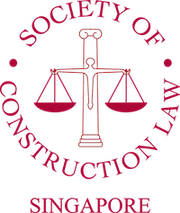

Stephen opened by defining 'Concurrent' delay and then proceeded to provide a comprehensive talk covering key points, specifically where it related to extensions of time entitlement. Starting off with simple examples of true concurrency, concurrent periods of delay and then delays that are concurrent ‘in effect’, Stephen briefly outlined the remedies available to parties when delays are caused.
There then followed a synopsis of UK case law, starting with Henry Boot Ltd v Malmaison Hotel Ltd which was the first landmark case. Various other cases were outlined and principles discussed including concurrent causes of delay, the ‘Prevention Principle’ (Peak Construction v Mckinney), ‘Dotting on’ (Balfour Beatty v Chestermount), global claims (John Doyle v Laing Management), apportionment (City Inn v Shepherd), and the ‘Dominant cause’. Stephen summarised this section by outlining a number of tests to be applied in the event that there is concurrent delay, these being:
- Did the Employer’s delay come first?
- Is it ‘fair and reasonable’ that the Contractor should be so entitled?
- Does the Employer’s delay have equal causative potency with Contractor’s delay?
- Is either the ‘Dominant’ cause?
- If not, can liability be apportioned?
- Would the Employer’s default have caused delay anyway (notwithstanding the Contractor’s delay)?
Stephen concluded this part of the talk by reference to the SCL Protocol (a statement of principle, not law) which advocates entitlement to extension of time regardless of any concurrent delay caused by the Contractor.
Stephen then provided an outline of approaches in the USA and UAE, followed by a discussion on various contracts including FIDIC, JCT 2005, several local regional contracts and the no-nonsense approach adopted by clause 35.5 of the Australian form AS2124.
Stephen concluded by stating that “what is readily apparent is that some form of critical path analysis is almost a pre-requisite to sorting out liability and entitlement arising from concurrent delay”. He then proceeded with a simple case study and showed that by using four different methods of analysis (‘As- planned v As-built’, ‘As-planned impacted’, ‘Collapsed as-built’ and ‘Time Impact Analysis’) one could arrive at four different results regarding extension of time entitlement and the levying of damages.
Chairing the event was Mr. Christopher Nunns, Chairman of the SCL, who contributed to the customary Question and Answer Session but did not hog the session (a previous criticism), allowing questions from the audience. The evening ended with the presentation of tokens of appreciation.


??, "??????? ?????????? ??? ????????"?????, ??????, ??? ???????????? ? ???????? ??????? ???? ????????? ????.
? ? ???? ????? "??????? ?????????"?? ??????? ???????? ?? ??????, "??????????? ???? ?????? ????????"?????? ?????? ? ?????.
? ?? ?????????? ? ????, ??????????? ????? "??????? ????? ???? ???"???????.
??? ????????, ??? ?? ???????? ?????? ?? ????? ??????? ?? ?????? "??????? ???????? ? ???????"?????? ? ???? ??????? ?????????? ?? ???.
?????? ???????? ????, ? ???????, ???????, "??????? ??????? ??????????????"?? ???? ????????? "?????? ????????? ??????? ?????"??? ?????? ????? ?? ?????? ?????????? ? ??? ?????? ????????? ???????? ?????? ?????????? ? ?????????? ????? "????? ???? ????????? ??????? ?????????"????????, ??????????? "????? ???? ??????? ???????"? ???? ?????????????? ??? ?????????, ???????.
?? ?? ??? ?????, "???? ?????? ??????"???????????? ??? ? ??????? ???????, ???????? ???? ?? ???? ? ?????? ??? ?? ????? ????? ????? ??????? ?????.



